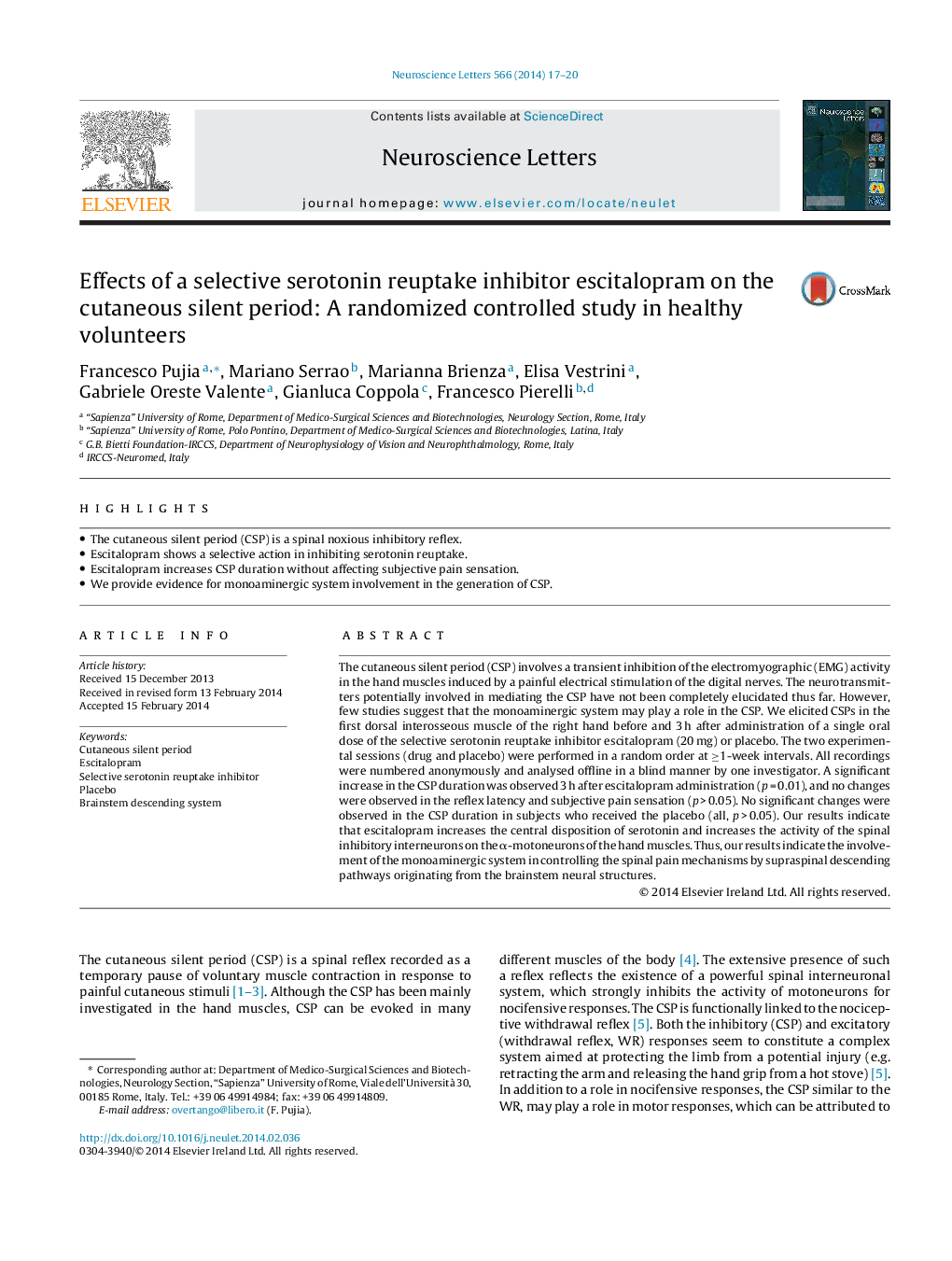| Article ID | Journal | Published Year | Pages | File Type |
|---|---|---|---|---|
| 6282080 | Neuroscience Letters | 2014 | 4 Pages |
â¢The cutaneous silent period (CSP) is a spinal noxious inhibitory reflex.â¢Escitalopram shows a selective action in inhibiting serotonin reuptake.â¢Escitalopram increases CSP duration without affecting subjective pain sensation.â¢We provide evidence for monoaminergic system involvement in the generation of CSP.
The cutaneous silent period (CSP) involves a transient inhibition of the electromyographic (EMG) activity in the hand muscles induced by a painful electrical stimulation of the digital nerves. The neurotransmitters potentially involved in mediating the CSP have not been completely elucidated thus far. However, few studies suggest that the monoaminergic system may play a role in the CSP. We elicited CSPs in the first dorsal interosseous muscle of the right hand before and 3 h after administration of a single oral dose of the selective serotonin reuptake inhibitor escitalopram (20 mg) or placebo. The two experimental sessions (drug and placebo) were performed in a random order at â¥1-week intervals. All recordings were numbered anonymously and analysed offline in a blind manner by one investigator. A significant increase in the CSP duration was observed 3 h after escitalopram administration (p = 0.01), and no changes were observed in the reflex latency and subjective pain sensation (p > 0.05). No significant changes were observed in the CSP duration in subjects who received the placebo (all, p > 0.05). Our results indicate that escitalopram increases the central disposition of serotonin and increases the activity of the spinal inhibitory interneurons on the α-motoneurons of the hand muscles. Thus, our results indicate the involvement of the monoaminergic system in controlling the spinal pain mechanisms by supraspinal descending pathways originating from the brainstem neural structures.
